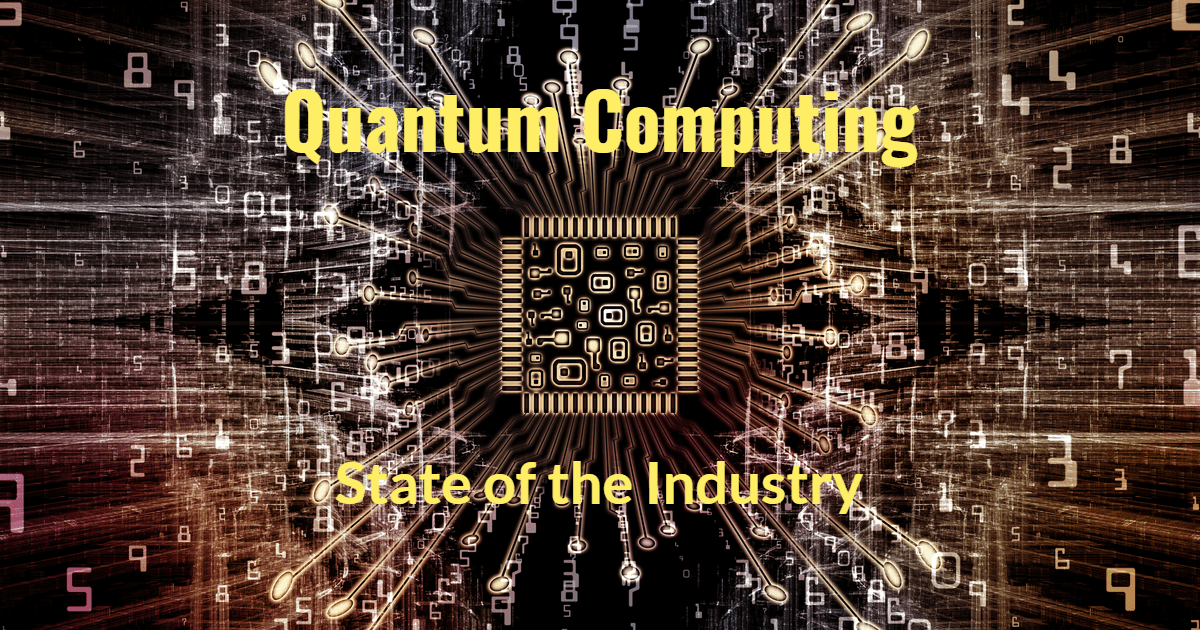What is Edge Computing?
Edge Computing represents the implementation and operation of computing applications, data, and services away from centralized nodes to the logical extremes of a given network.
The edge is a matter of perspective. In physical terms, the edge can be defined relative to the center, such as computing occurring far away from centralized computational infrastructure. By way of example, a term used in Internet of Things (IoT) to refer to decentralized cloud computing is “Fog Computing” (e.g. cloud computing at the edge).
What is Driving the Evolution to Edge Computing?
The Information and Communications Technology (ICT) industry is embracing ubiquitously connected smart devices (wearable computing, smart metering, smart home, smart city, connected vehicles and large-scale wireless sensor networks), which are increasingly becoming the focal point of computing.
Some of these devices (such as smartphones) have their own on-board computing capabilities. However, there are limiting factors such as battery life, heat dissipation, computational scalability, and other issues. Accordingly, there is a driving force to identify an optimal balance of computing across distributed devices, edge network elements, and centralized infrastructure.
Whereas the evolution of ICT has taken the industry from mainframes, to PCs, and back to the cloud (e.g. from centralized to distributed to centralized), clearly edge computing will have an increasingly important role in the digital economy.
Edge Computing in Cellular: Mobile Edge Computing
Mobile cellular operators are making plans for Mobile Edge Computing (MEC), which enables cloud computing capabilities and an IT service environment at the edge of the cellular network.
More than just cellular, MEC is also referred to as Multi-access Edge Computing
While computing has long been the domain of Information Technology (IT), edge computing is rapidly bringing together IT and telecom, particularly in cellular networks. Cellular network operators must think about more than just base stations with MEC – they must think about distributed mini-datacenters throughout their network.
Highly complementary to fourth generation LTE equipment and the emerging fifth generation (5G) networks, Mobile Edge Computing (MEC) is poised to transform ICT to create a new communications-computation paradigm in which planning, engineering, deployment, and operation of telecommunications and computing will occur simultaneously.
MEC significantly optimizes available bandwidth as well as cellular back-haul. These are two areas that will become increasingly important as LTE continues to evolve and 5G networks roll-out.
Edge Computing Architecture
Edge computing is the cornerstone to wireless carrier strategies for deploying Heterogeneous Networks (HetNet) as MEC provides improved computational and communications infrastructure efficiencies and effectiveness for the overall network including LTE, 5G, and carrier WiFi.
Edge computing infrastructure consists of hardware and a virtualization layer. MEC platforms allow application hosting using virtualization manager and services. Communication is facilitated via defined Application Programming Interfaces (API), which enables access between the MEC platform and supporting functions such as configuration management via the APIs.

Edge Computing Architecture
As indicated in the illustration, MEC can be viewed as part of a two component system consisting of edge cloud resources and centralized computing. The centralized cloud will continue to store some data and support queries and data analytics.
However, certain data processed at the edge of the network will not be transported to centralized resources. This provides a savings in transport costs as well as reducing the latency involved in decision making (e.g. decisions are made locally at the edge of networks). This architecture also enables process of real-time data for analytics purposes.
Data may be passed as a real-time stream to enterprise organizations for real-time decision making. In addition to conventional data analytics software, systems may be augmented with artificial intelligence to provide further data management efficiencies as well as improved decision making effectiveness.
MEC Challenges and Opportunities
There are many potential challenges for deploying MEC. Perhaps the most daunting up-front challenge will be the need for simultaneous planning for communication and server equipment.
MEC servers and platforms can be deployed in many locations including, but not limited to, an LTE and/or 5G macro base station site, the 3G Radio Network Controller site, a multi-RAT cell aggregation site, or at an aggregation point.
With MEC, there is clearly a new computational-communications paradigm in which communications and computing are no longer thought of as separate things. Furthermore, they are planned, engineered, deployed, and operated together.
In parallel with this new paradigm, mobile networks are becoming video networks. This is essentially the case because the vast majority of bandwidth demand is driven by video usage of some type. This is anticipated to accelerate with MEC as there will be many more uses for video, such as public safety (e.g. face recognition to identify potential threats).
With this new paradigm there will be a need for more efficient management of real-time data and analytics as vast amounts of data is collected, much of which will require real-time processing.
Communication Service Providers (CSP) are not accustomed to planning for remote servers. However, MEC essentially needs many remote datacenters.
Mind Commerce predicts that CSPs will need to partner with network integration companies to realize the full vision of MEC. CSPs cannot be bogged down in negotiations, planning, engineering, and deployment of MEC communications/computing platforms every time a new site is acquired.
Mobile Edge Computing Opportunities
In general, MEC brings virtualized applications much closer to mobile users ensuring network flexibility, economy and scalability for improved user experience. It facilitates a service environment that allows a seamless access experience and improved responsiveness for content, services, and applications.
MEC and Network Management
MEC allows for dynamic provisioning in an on-demand fashion with no advanced reservation required. MEC also provides for improved flexibility in which mobile applications can be implemented and scaled to meet unpredictable user demands.
MEC also supports multi-tenancy in which service providers can share the resources and costs to support a variety of applications and large number of users. This provides additional flexibility as multiple services from different providers can be integrated easily through the cloud and the Internet to meet the users’ demands.
MEC and Application Development
MEC offers app developers and content providers cloud computing capabilities and IT service environments at the edge of the network. Edge functionalities will pave the way to deploy innovative applications and services. The emerging MEC service environment will facilitate a seamless access experience, dramatically lower latency, and improve capacity optimization for content, services, and applications.

Additional app and services areas improved by MEC include:
- Autonomous vehicle communications and control
- Vehicle-to-Vehicle (V2V) communications, apps, and services
- Improvements to Augmented Reality (AR) and Virtual Reality (VR)
- Data-as-a Service (DaaS) with emphasis on contextual real-time data
- Smart building applications and new and enhanced enterprise services
The Mobile Edge Computing “Sweet Spot”
While MEC will provide many benefits overall, the proverbial “Sweet Spot” for MEC is to identify those applications and content that are latency dependent, computationally “heavy” (e.g. they require a lot of computing power, so better to do at the edge than burden the entire network), and/or require mobility.

Another app that will potentially benefit from this MEC sweet spot is teleoperation, which is a term referring to operation of a machine at a distance such as manufacturing equipment or a robot.
Prior to 5G and MEC, Teleoperation is largely relegated to fixed communications connections. 5G and MEC will enable Teleoperation anywhere there is 5G coverage, enabling many new consumer and industrial automation scenarios involving robotics.
Impact of MEC on Cellular Network Operations
Implementation and operation of MEC has profound implications. For example, there will not be a need to always route completely through the entire switching fabric for Internet transport. In other words, certain content and applications can be consumed locally rather than relying upon back-hauling and/or hair-pinning through a home gateway to the (central) cloud.
This environment is characterized by ultra-low latency and high bandwidth as well as real-time access to radio network information that can be leveraged by applications and QoE platforms located “deep into the network”. Better performance through partial off-load from device to edge or centralized cloud to edge. One good example app that will benefit from this is cloud gaming.
MEC and Radio Access Networks
MEC works closely with smart Radio Access Networks (RAN), as it pushes computing capabilities much closer to RAN that can provide seamless access to content, application, and service over low-latency and high bandwidth network. The ideal MEC structure is to deploy distributed computing equipment that can support high volumes of connected devices.
MEC and Content Delivery Networks
Mobile operators will be able to deliver content to end-users much faster with MEC by serving it directly from the RAN. This dramatically improves radio utilization and also provides other efficiencies. One of those efficiencies is Content Delivery Network (CDN) operation.
Mind Commerce estimates that MEC is poised to make CDNs up to 40% more efficient for cellular Communications Service Providers (CSP). Cost savings will be shared between CSPs and CDN providers with the latter improving margins by up to 25%.
MEC and Overall Network Latency
With all of the important advantages of MEC, it is important to recognize that there are trade-offs such as overall network latency involved in computing at the edge (e.g. the remainder of the network may be delayed while computing happens at the edge, unless it may occur in parallel processing manner).
Standardizing Mobile Edge Computing
The principle industry group driving Mobile Edge Computing standardization is the European Telecommunications Standards Institute (ETSI), which established a MEC Industry Specification Group (ISG) in 2014.
Previously known as “Mobile” Edge Computing, ETSI redefined MEC to account for “addressing multiple MEC hosts being deployed in many different networks, owned by various operators and running edge applications in a collaborative manner.” This new view of MEC is why the term “Multi-access” is used as there is now a focus upon many different means of accessing the edge including Heterogeneous Networks (HetNet) using various evolved versions of LTE, 5G technologies including millimeter wave RF, fixed wireless deployments, WiFi, and more.
The group has now completed Phase 1 set of specifications, including reference architecture and a set of key APIs identified as requiring immediate treatment. Most of the APIs are available through ETSI’s FORGE (an OpenAPI hub site).
The group is now actively proceeding with its Phase 2, which includes a broader work scope as well as several new types of industry outreach efforts, such as MEC Hackathons and a series of white papers focused on aspects of edge computing beyond just the scope of ETSI MEC standards.
Learn More about Edge Computing
We encourage you to learn more about edge computing, including mobile/cellular networks as well as other means of interconnection, hence the new ETSI term “Multi-access Edge Computing”.
Visit our Edge Computing Insights page for more information. We also encourage you to consider our computing reports portfolio, which covers both centralized cloud computing as well as computational infrastructure at the edge of networks.
Finally, we welcome your own comments, opinions, and/or questions about MEC. Please contact us to discuss. We look forward to hearing from you.







Leave A Comment
You must be logged in to post a comment.